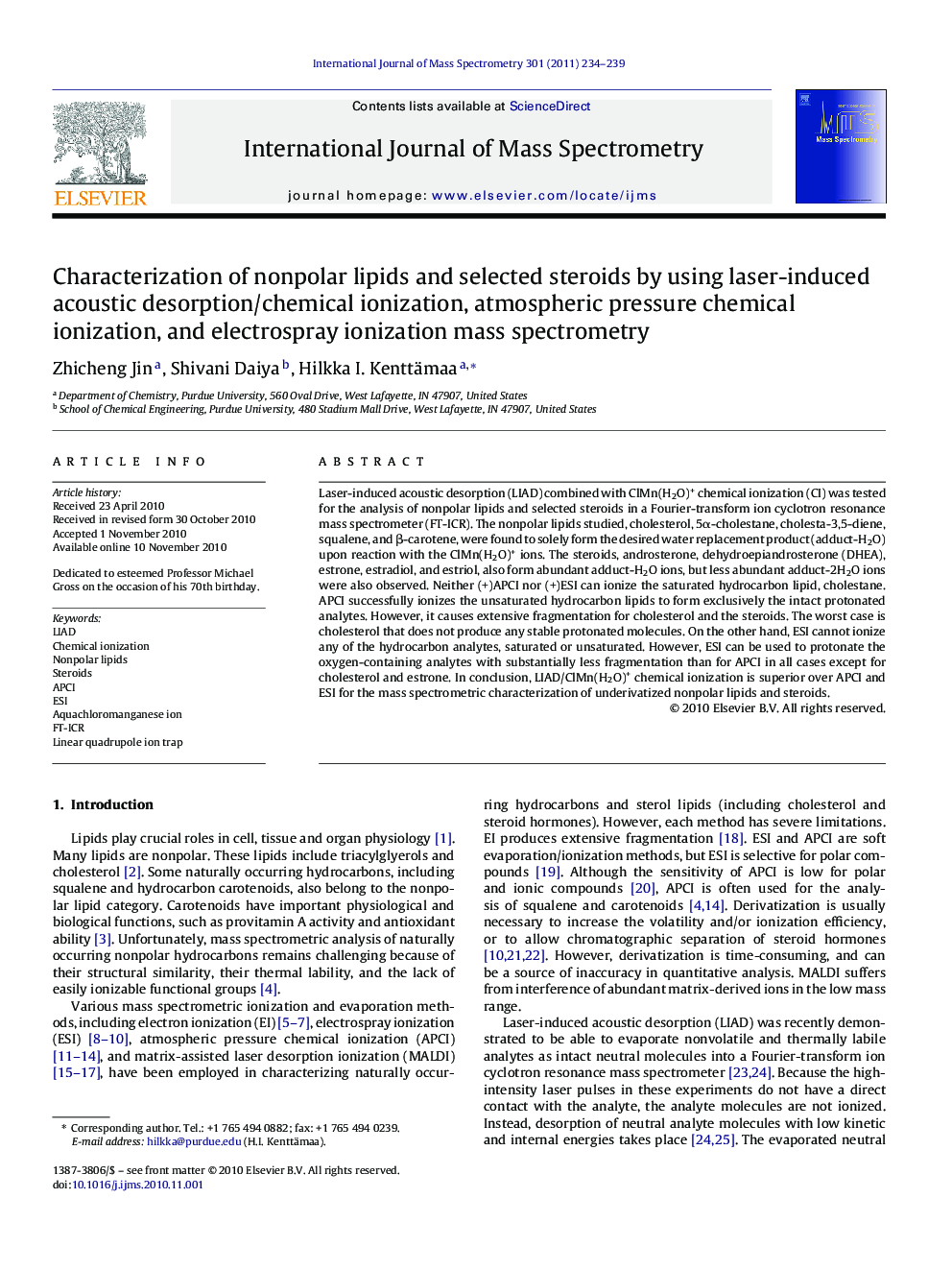| کد مقاله | کد نشریه | سال انتشار | مقاله انگلیسی | نسخه تمام متن |
|---|---|---|---|---|
| 1194491 | 1492314 | 2011 | 6 صفحه PDF | دانلود رایگان |

Laser-induced acoustic desorption (LIAD) combined with ClMn(H2O)+ chemical ionization (CI) was tested for the analysis of nonpolar lipids and selected steroids in a Fourier-transform ion cyclotron resonance mass spectrometer (FT-ICR). The nonpolar lipids studied, cholesterol, 5α-cholestane, cholesta-3,5-diene, squalene, and β-carotene, were found to solely form the desired water replacement product (adduct-H2O) upon reaction with the ClMn(H2O)+ ions. The steroids, androsterone, dehydroepiandrosterone (DHEA), estrone, estradiol, and estriol, also form abundant adduct-H2O ions, but less abundant adduct-2H2O ions were also observed. Neither (+)APCI nor (+)ESI can ionize the saturated hydrocarbon lipid, cholestane. APCI successfully ionizes the unsaturated hydrocarbon lipids to form exclusively the intact protonated analytes. However, it causes extensive fragmentation for cholesterol and the steroids. The worst case is cholesterol that does not produce any stable protonated molecules. On the other hand, ESI cannot ionize any of the hydrocarbon analytes, saturated or unsaturated. However, ESI can be used to protonate the oxygen-containing analytes with substantially less fragmentation than for APCI in all cases except for cholesterol and estrone. In conclusion, LIAD/ClMn(H2O)+ chemical ionization is superior over APCI and ESI for the mass spectrometric characterization of underivatized nonpolar lipids and steroids.
Figure optionsDownload high-quality image (67 K)Download as PowerPoint slideResearch highlights▶ Different ionization methods were compared for the mass spectrometric analysis of nonpolar lipids. ▶ LIAD/CI was found to be superior to ESI and APCI. ▶ A stable pseudo-molecular ion was formed for all analytes, including saturated hydrocarbons.
Journal: International Journal of Mass Spectrometry - Volume 301, Issues 1–3, 30 March 2011, Pages 234–239